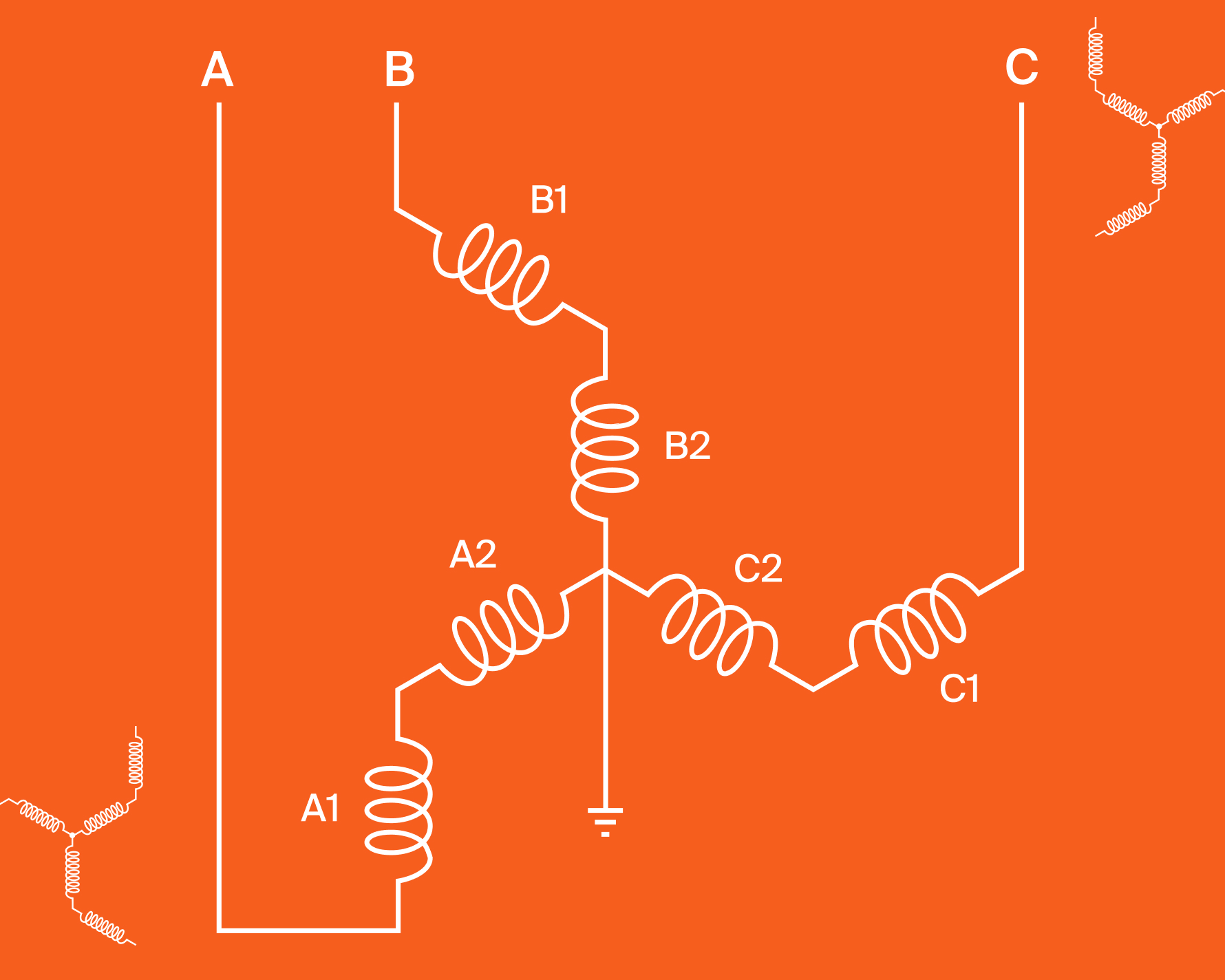Guide to K-Factor Rated Transformers
K-factor rated transformers are designed to endure the heat of harmonics. Explore their components, rating levels, and common uses.
August 26, 2025
How To's
Many power systems have some kind of problem with harmonics. Overheating, unit failure, and power losses are just a few of the issues that they cause.
Different transformers handle harmonics in different ways. Some units, such as zig-zag transformers, directly filter or mitigate harmonics. While other transformers are made simply to withstand them. These are K-factor rated transformers. They have specialized components that protect them against the effects of harmonics.
What makes K-rated units different? And when should you use one? Let's take a look.
What is a K-Factor Rated Transformer?
A K-factor rated transformer has special insulation and winding conductors to withstand harmonics. Manufacturers build these units to endure the extra heat that harmonics cause. K-rated transformers have four unique components that make them extra durable.
- Upgraded Core
- Specialized Windings
- 200%-Rated Neutral
- Electrostatic Shield
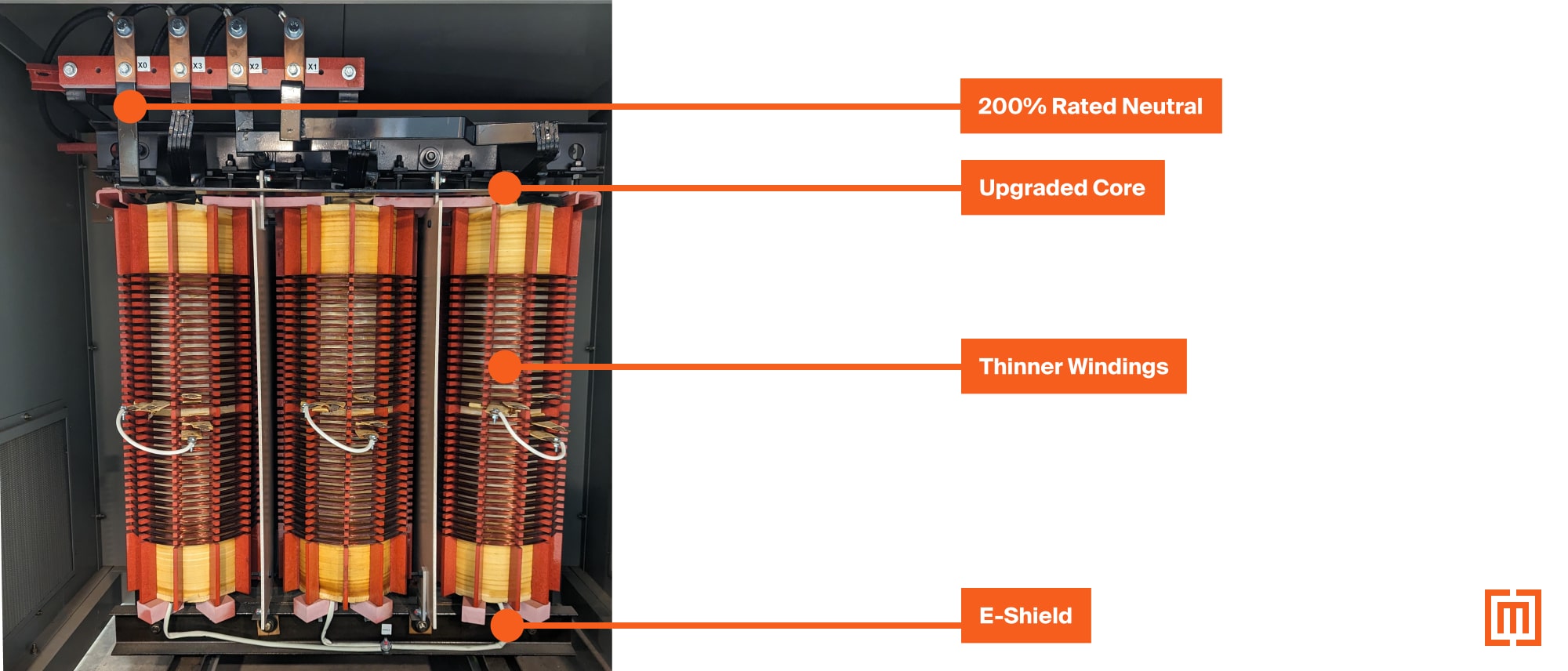
Upgraded Core for Harmonics
K-rated units have a special core design for handling harmonics.
Under usual service conditions, the magnetic field in the core changes polarity 60 times per second (60Hz). (Learn more about how transformers work.) Harmonics are just multiples of this fundamental 60 Hz signal. That means they cause the switch in polarity to happen much faster. For example, the magnetic field alternates 300 times per second for the 5th harmonic, 540 times per second for a 9th, and so on. This rapid increase causes overheating in normal cores. K-rated transformer cores are specifically designed to handle this extra heat.
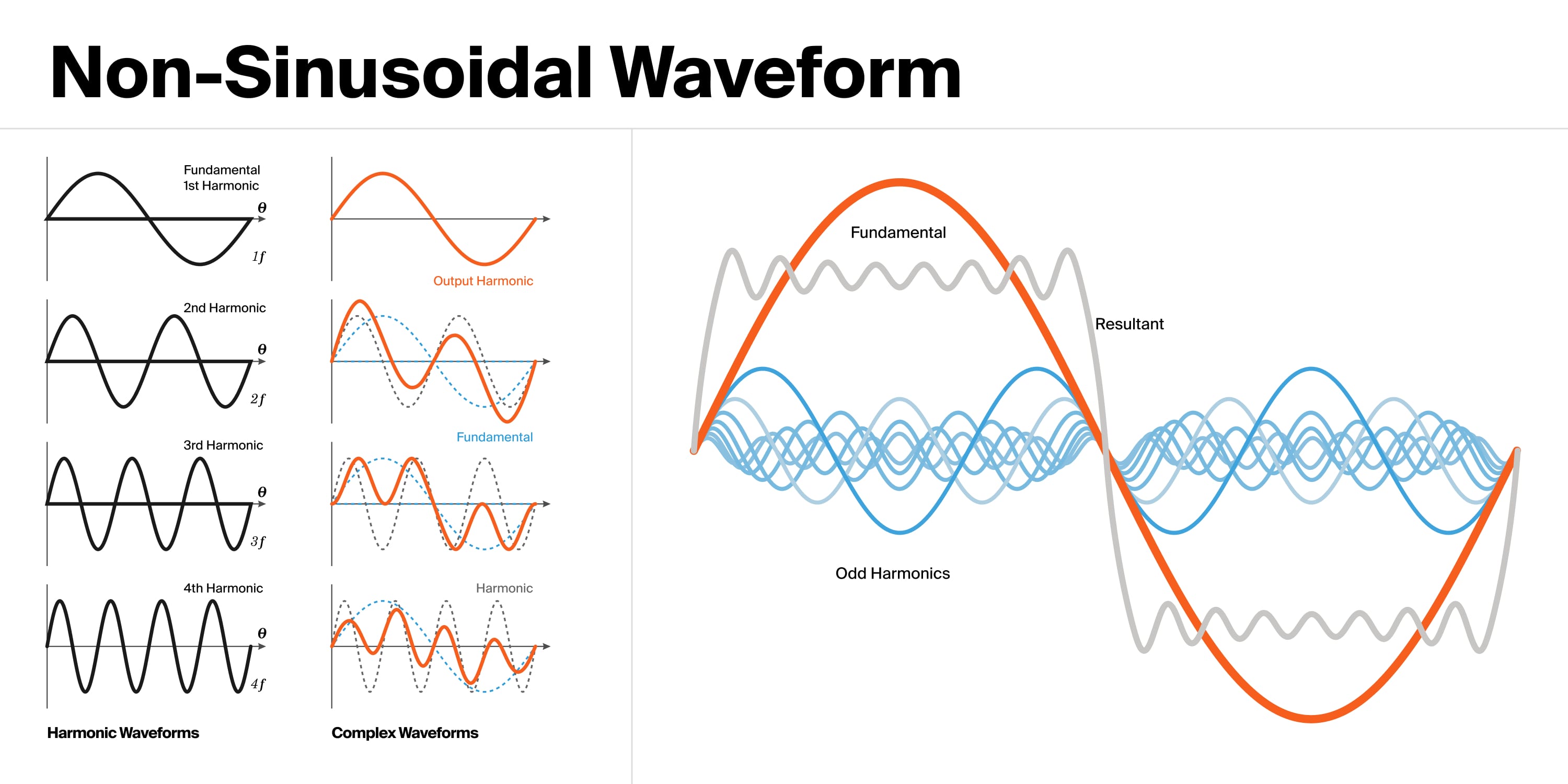
Windings Designed to Handle Harmonics
The shape of the K-rated conductor also protects it from heat.
Harmonics naturally force electrons toward the outer surface of the winding conductor. This movement causes increased resistance and heat...also called “skin effect”. The graphic below shows how harmonics push the electrons from the center of the conductor into the “skin depth” area of the conductor.
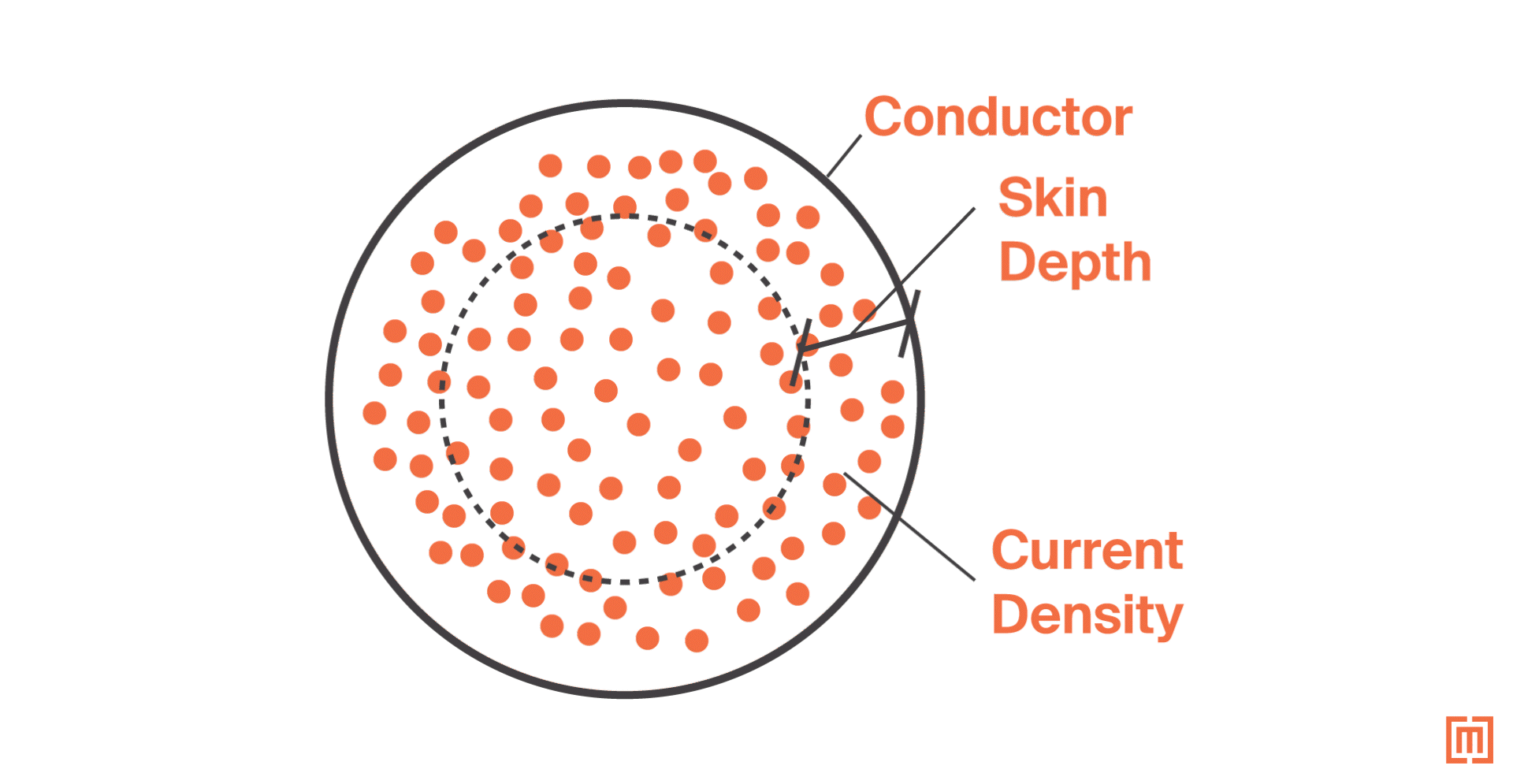
K-rated windings are uniquely shaped to spread any extra heat evenly across the conductor surface.
The graphic below shows the different K-factor and standard windings sizes.
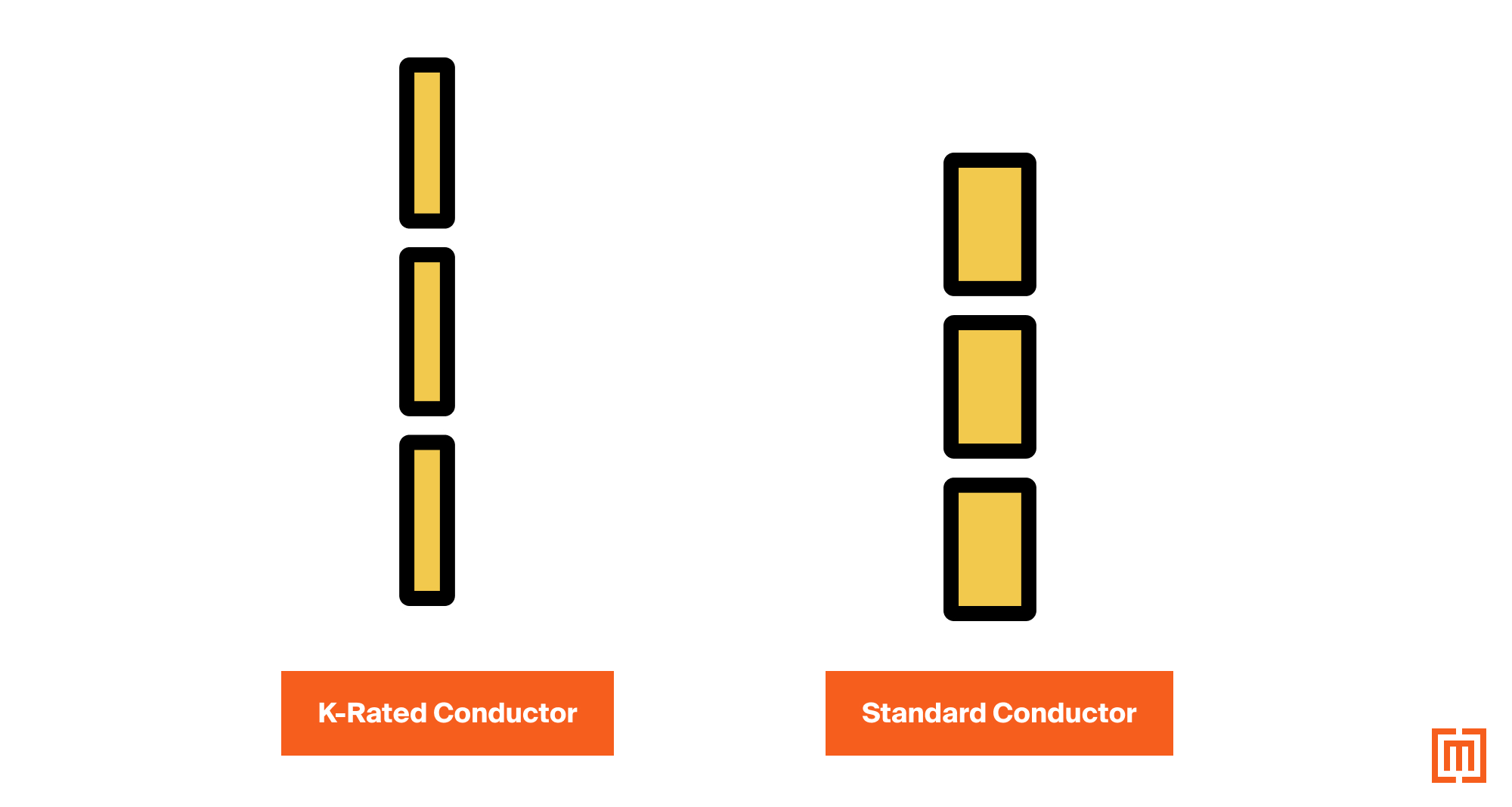
A Higher Rated Neutral Conductor
Harmonics frequently overheat the neutral conductor in wye-connected windings. This is especially common in large single-phase loads where you can expect to see triplen harmonics (3rd, 9th, 15th, and so on.)
If there are any triplen harmonics present in any phase of your system, they will "clump" together at the neutral conductor. This "clump" of harmonics will then reduce the neutral's current-carrying capacity. And if the amount of triplen harmonics is high enough, the neutral conductor will overheat, and its insulation system will fail.
K-rated transformers protect your unit with a 200% rated neutral to handle this heat.
The graphic below shows the size difference in neutrals in a normal isolation transformer vs. a K-rated transformer.

An Electrostatic Shield
Lastly, most standard K-rated transformers have an electrostatic shield between the high and low voltage windings. This non-magnetic sheet protects the transformer coils and sensitive electronics from voltage disturbances.
Now, to be clear, an e-shield doesn’t deal with harmonics. Rather, it deals with the issues that usually come with harmonics. If your system has problems with harmonics, it probably has other power quality issues as well.
Like transient spikes and mode noise which can damage your transformers. An electrostatic shield redirects these harmful voltage disturbances away from a transformer’s coils and sensitive electronics. This protects both the transformer and the system connected to it.
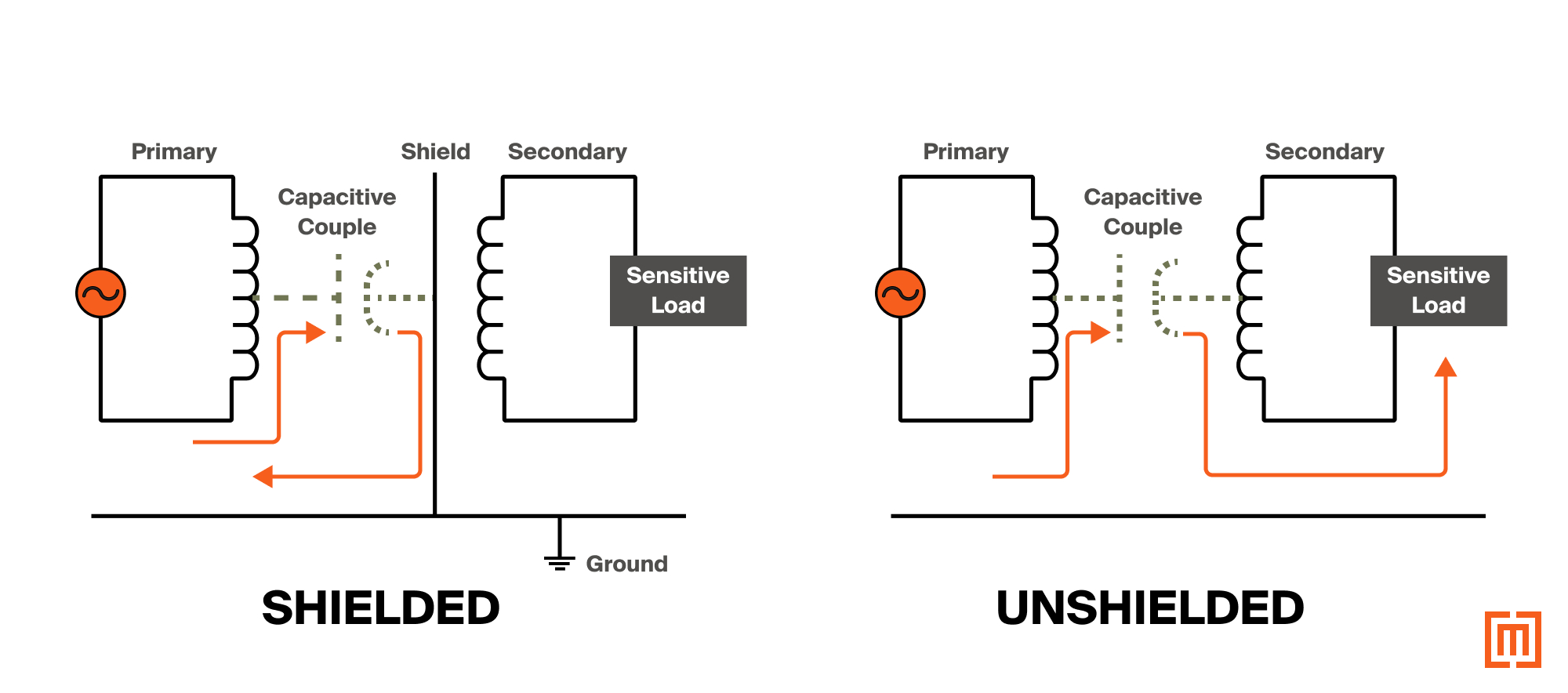
Ok, we've seen what components make a K-rated unit unique. Let's take a look at K-factors.
What Do K-Factors Mean?
K-factors are basically values that tell you what level of harmonics your transformer can handle. They're also industry standards set by IEEE Standard C57.110.
Think of a transformer with a K-factor like a punching bag. The bigger and heavier the bag, the more hits it can take. In the same way, a transformer with a higher K-factor rating can handle a higher level of harmonic distortion.
Here's a quick summary of the applications and harmonics for each K-factor rating.
If your transformer is experiencing harmonics, you should probably confirm your unit is being used as intended.
Do You Need a K-Rated Transformer?
Alright, so now you know what makes a K-rated unit unique, and what each K-factor rating means.
How do you know if you need one?
Doing a power quality study will answer this for you. The study will let you know the total harmonic distortion in your system. It should also give you a breakdown of each harmonic frequency present. You could also examine the individual units in your system, and then estimate the total harmonic distortion.
Here’s a common example of where you might need a K-rated unit.
Let’s say you have an older hospital building. In recent years, the hospital has added machines with non-linear loads including cat-scan and MRI machines. Adding too many of these devices could change the total harmonic distortion of the hospital’s power system. Conducting a power quality analysis will tell you if you now need a K-rated transformer.
Here are a few other common scenarios:
Data Centers
Computer servers often create a large volume of triplen harmonics. This frequently happens in server farms, telecom facilities, and network centers.
Office Buildings
Office buildings usually contain solid state devices like computers and LED lighting. The harmonic contribution from these non-linear loads can overheat transformers.
Industrial Facilities
Equipment used for industrial processes often yields high levels of harmonics. Examples include rectifiers, arc furnaces, arc welders and large motor control systems. If you want to avoid overheating, you have to size your transformer to account for these loads.
Renewable Energy Projects
Solar inverters, wind turbine converters, and battery storage systems can also cause some level of harmonic distortion. You may need a K-rated transformer in these applications to handle the extra stress on the units.
How K-Rated Transformers Compare to Other Transformers
Many times K-rated transformers can be confused with different transformers. This chart offers a brief summary of how K-rated transformers compare with other types of units.
Let's look at how K-rated units compare with drive isolation and harmonic mitigating transformers.
K-Factor Rated vs. Drive Isolation
Drive isolation transformers (DITs) differ from k-rated units in several ways.
A DIT is designed for temporary overloading from motor drives. K-rated units are made for continuous non-sinusoidal loading (non-linear loads) due to harmonics. Because of this, DIT will not have the 200% rated neutral that a k-rated unit has. Also standard K-rated units have an e-shield, while those shields are optional for DIT's.
K-Factor Rated vs. Harmonic Mitigating
K-factor rated transformers endure additional heat caused by harmonics without premature insulation failure. They don't reduce harmonics, but have the capacity to safely handle them. Harmonic mitigating transformers (HMT's) actively reduce harmonics using specialized winding configurations and phase shifting techniques. Doing this improves the power quality and reduces system losses.

Choosing an HMT is often more complicated than choosing a K-rated unit.
Harmonic mitigation usually requires a working knowledge of how a specific electrical system behaves. You'll also need to know which harmonic frequencies are present, and how to deal with them. Using a K-factor rating requires less analysis. You’ll just need to know what level of harmonic distortion to account for. Not how to deal with or fight against it.
Ultimately, it all comes down to your approach. K-factor transformers will make your transformer durable. HMTs will proactively address the source of harmonic distortion.
Should You Derate Your Transformer?
Here's one last consideration regarding k-rated transformers.
K-factor rated transformers are generally custom built. However, sometimes companies can't wait for a custom-built unit. Harmonics are damaging both their transformers and their power system. They need a solution now.
If this is your situation, you can consider derating a transformer.
What is Derating a Transformer?
Derating a transformer (or applying a derating factor) means designing the transformer to run cooler. This practice will handle some of the additional heat. It can also help the transformer operate within the winding insulation’s standard temperature threshold.
Derating a transformer can also be intentionally buying an oversized transformer. Instead of buying a k-factor transformer, you can oversize the kVA of a standard isolation unit. This is a common industry practice that avoids overheating and extends unit lifespan.
This will not provide a long-term solution for withstanding harmonic heat. But, it will reduce some of the stress and overheating on your unit for a period of time.
Derating Your Transformer vs. Buying a K-Factor
If you cannot wait for a custom k-factor unit, derating is a viable alternative. If your system’s harmonic distortion is minimal (k4, for example), oversizing of the kVA—or establishing a derating factor—may work just fine. For systems with higher amounts of harmonics you should consider a k-factor rated transformer.
Oversizing the transformer kVA will increase the size of the core, windings, and neutral conductor. It is common to derate liquid-filled transformers, and use K-rated units with dry-types.
Conclusion
Harmonics are a common power system problem, but there are ways of handling them. If any of the above scenarios sound familiar, it’s very possible that a K-rated transformer could help. You'll want to start with a power quality study to know what your system can handle, and what level of harmonics you have.
Even though harmonics are common, they are not something to be ignored. Neglecting them could mean continued overheating and power loss to your transformers. It could also mean expensive repairs, and very expensive replacements.
Using a K-rated unit will strengthen your system against the heat of harmonics.
If you think you might need a K-rated transformer, fill out the form below.








